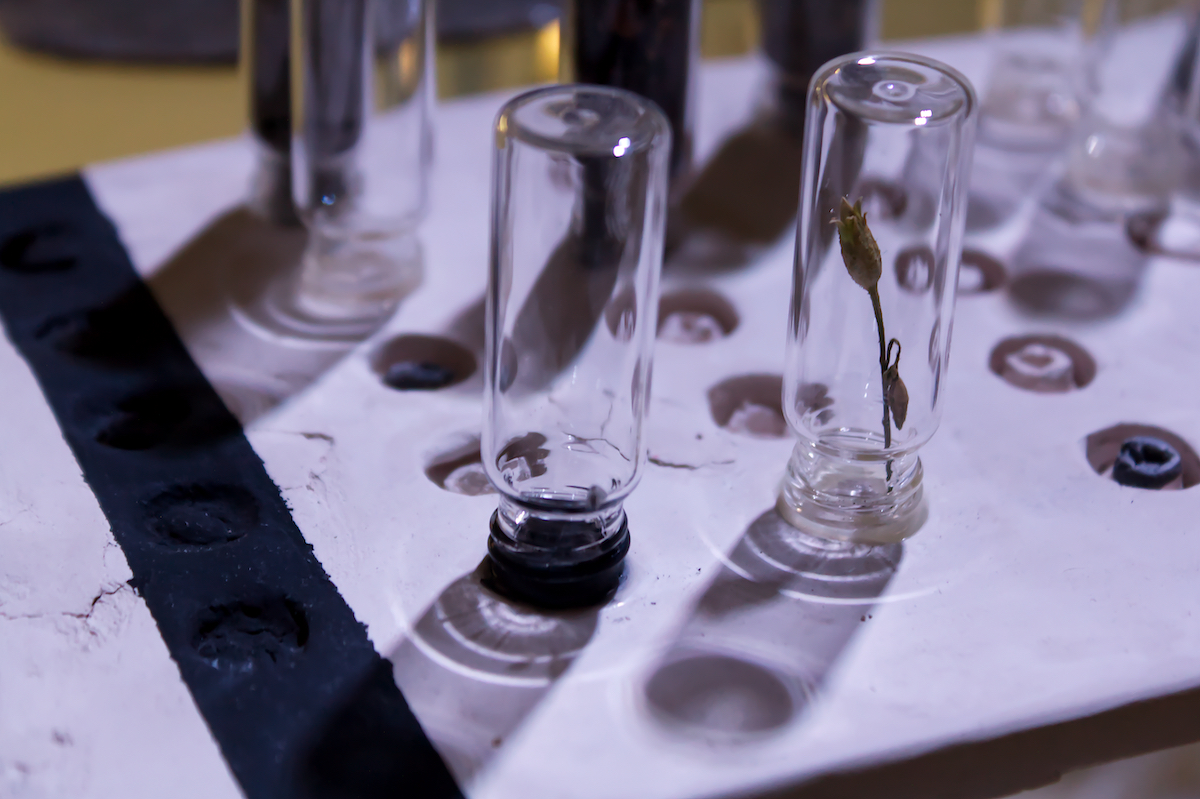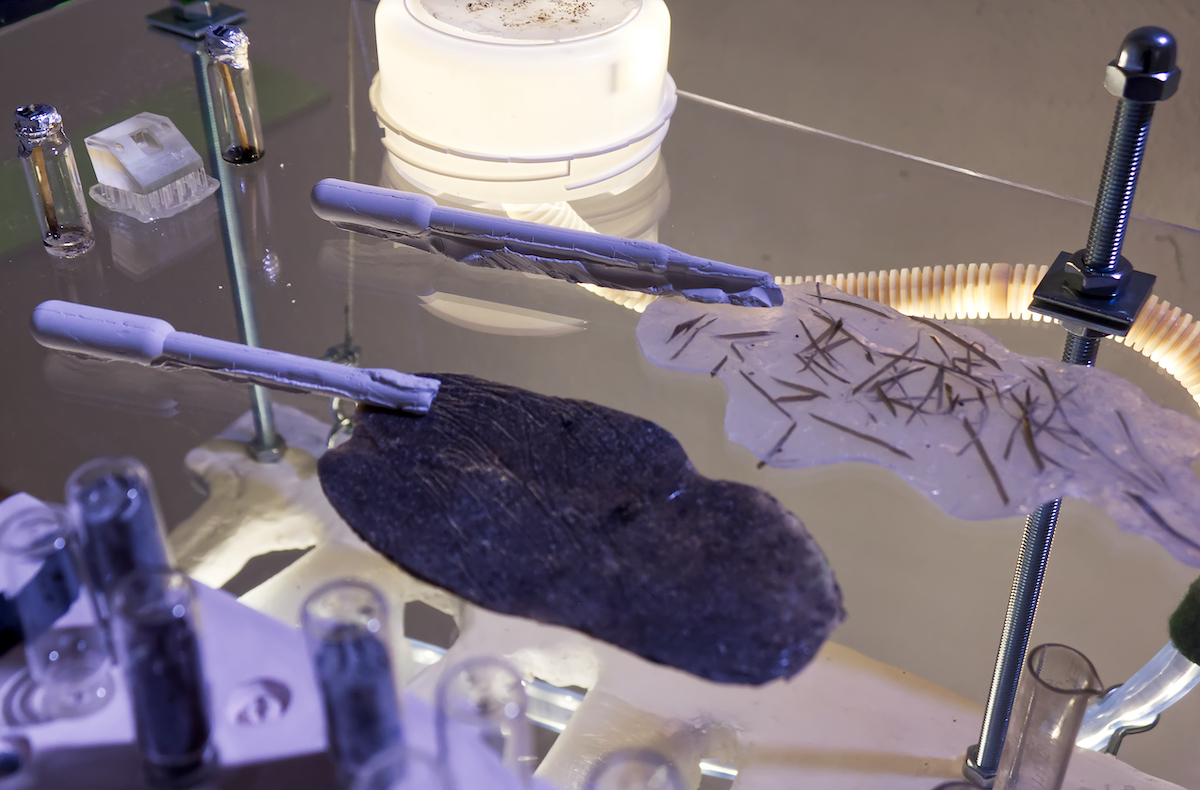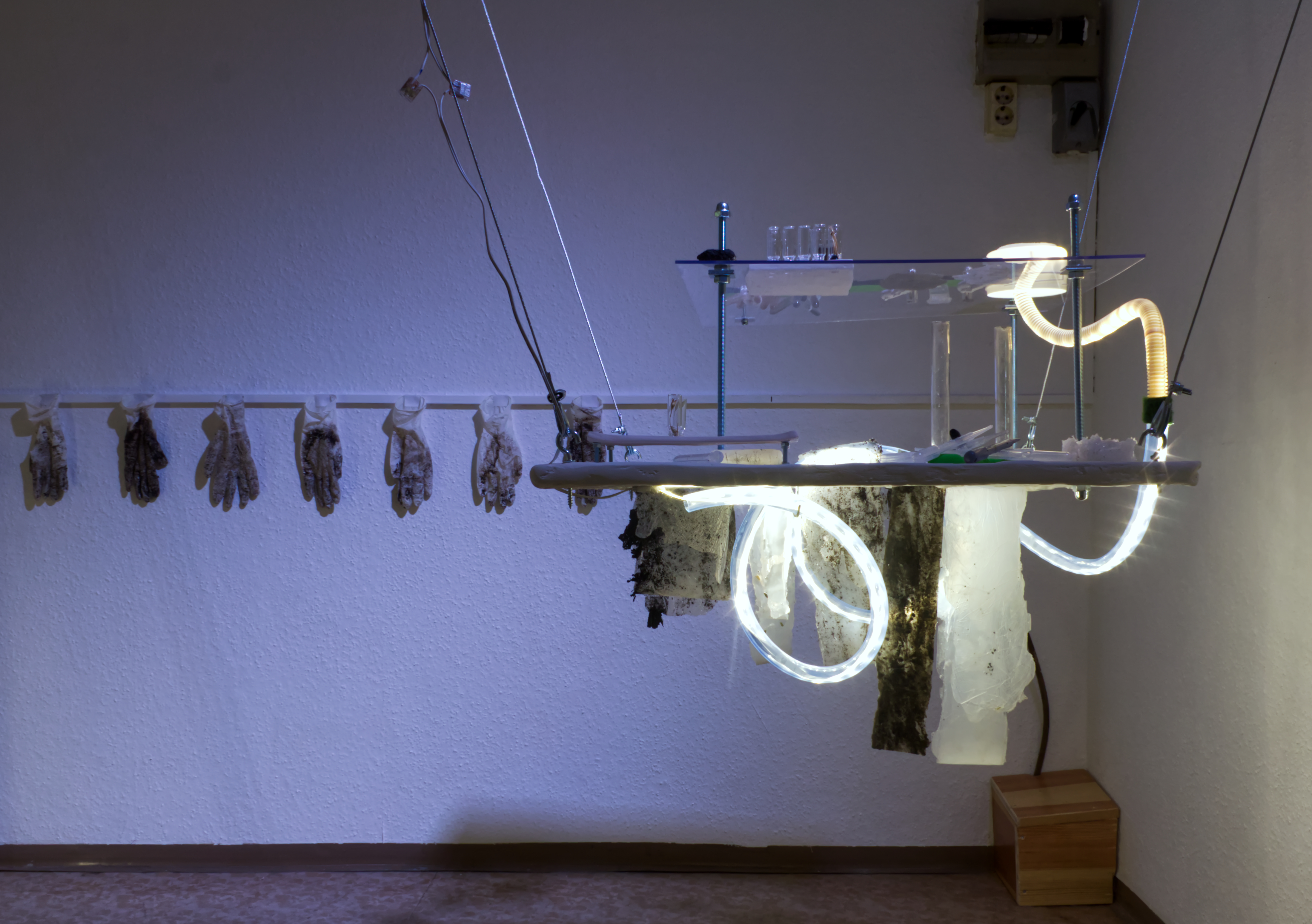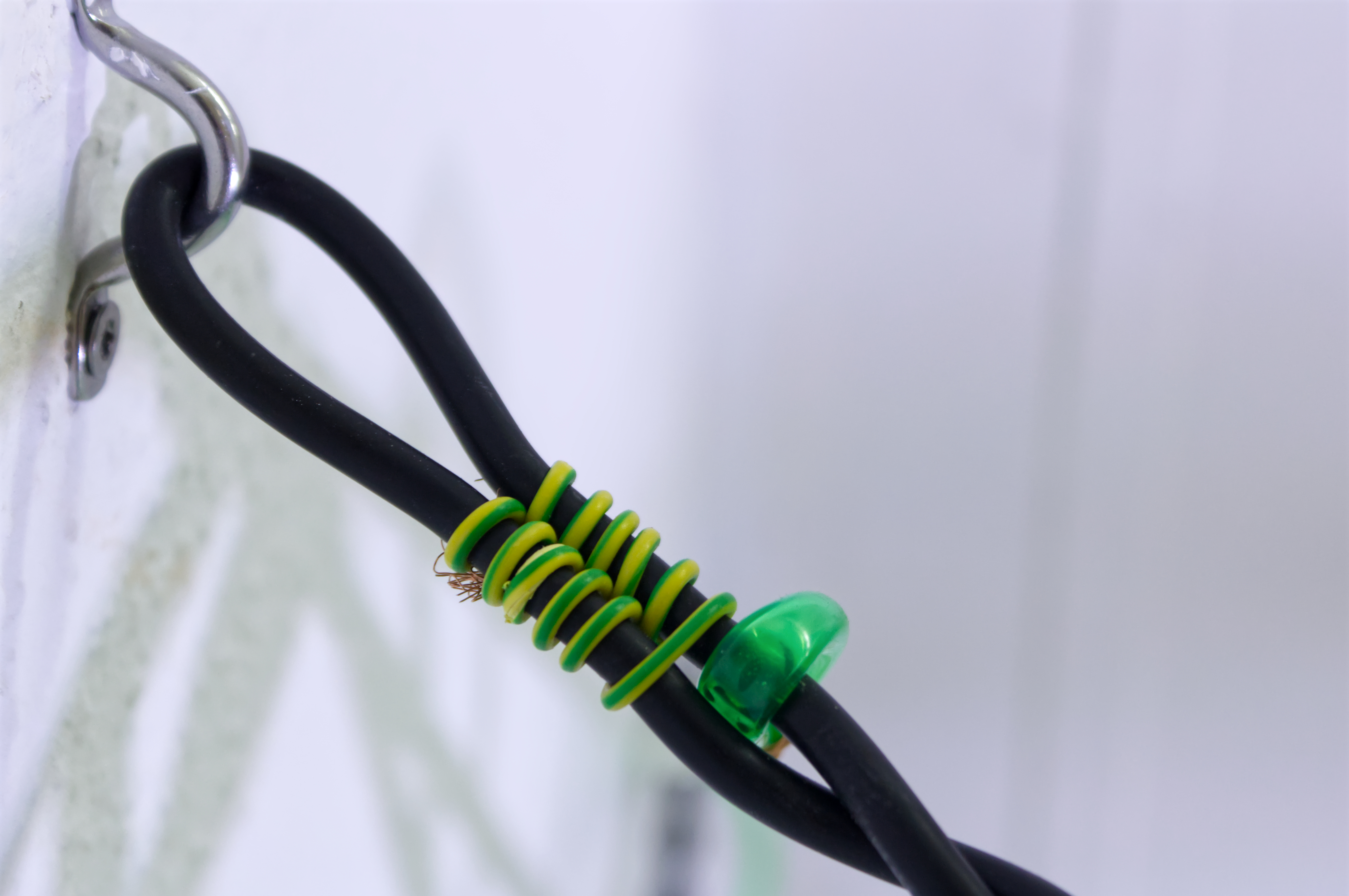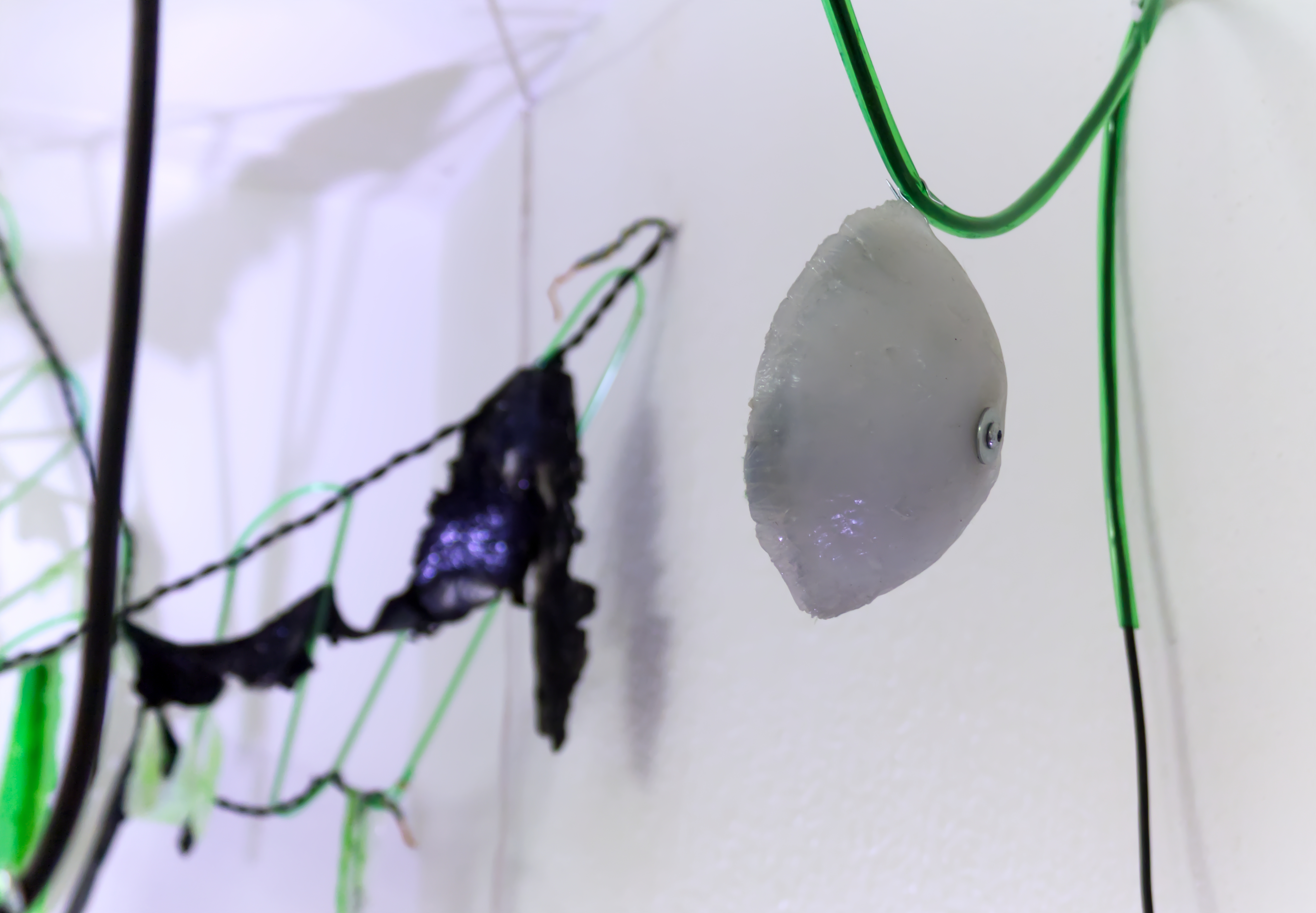Experimental Field: Scientific Impressions Expressed as Artistic Research
site-specific installation
Trafo, Jena (2021)
plaster, ceramics, silicone, tinker forge motion sensors, tinker forge angle sensors (motion & angle sensors), bluetooth, sound, LED lights, soil, ashes, nicotiana attenuata plant parts, human breast milk, acrylic, plexi, glass, styrofoam, cables, tubes, and recycled or borrowed laboratory equipment and materials.
Trafo, Jena (2021)
plaster, ceramics, silicone, tinker forge motion sensors, tinker forge angle sensors (motion & angle sensors), bluetooth, sound, LED lights, soil, ashes, nicotiana attenuata plant parts, human breast milk, acrylic, plexi, glass, styrofoam, cables, tubes, and recycled or borrowed laboratory equipment and materials.





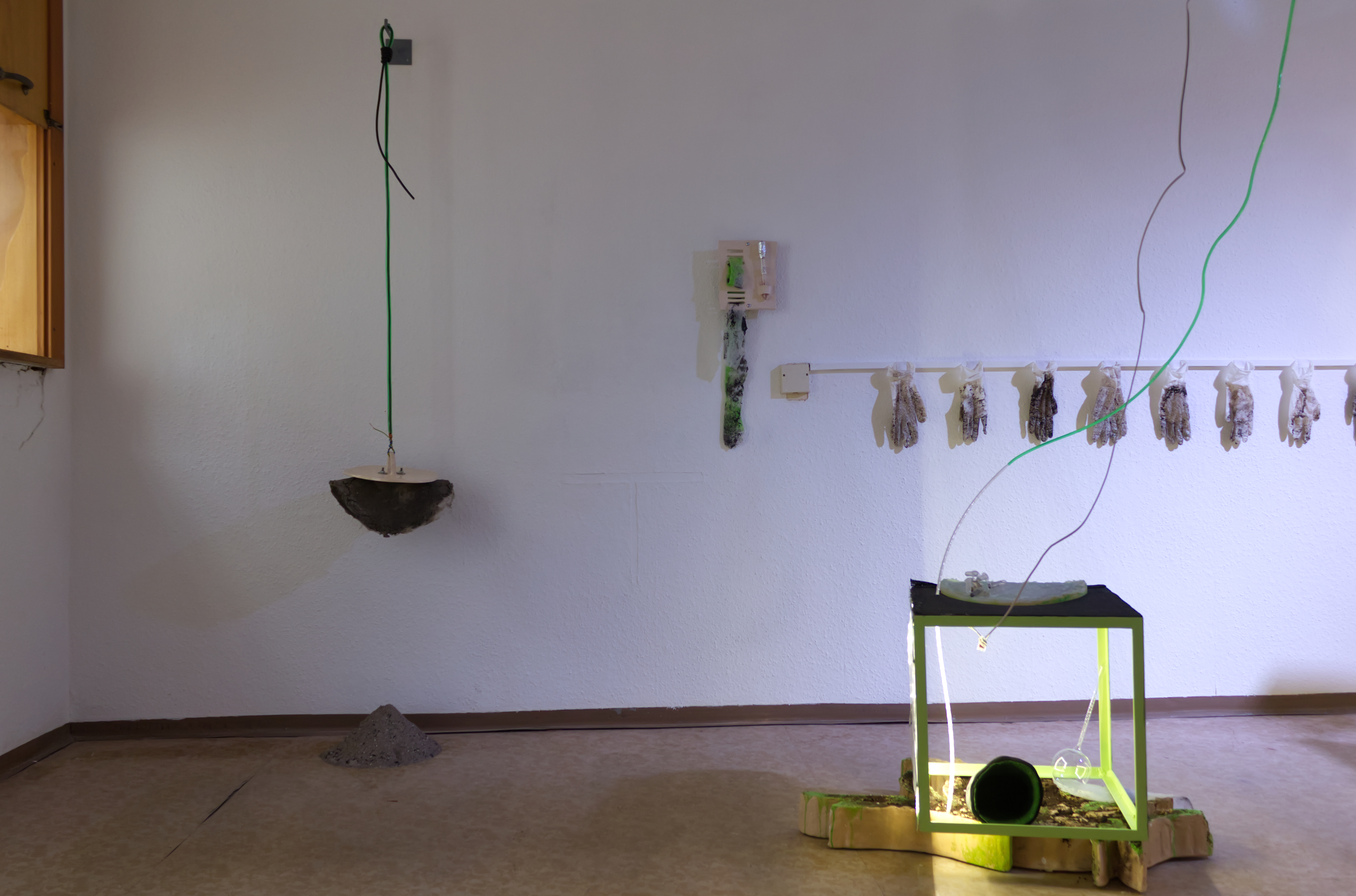

An artistic interpretation during the art & science residency program ‘die Entstehung einer Künstlerische Tatsachen’ from July-October 2021.
During my time in Jena, I visited the Max Planck Institute for Chemical Ecology, the Leibniz-Hans Knöll Institute, and the Electron Microscopy Center. The elements in this installation tell stories of the Nicotiana Attenuata, a plant native to Utah, and how the microbiome is researched in both natural landscapes and in the lab. The experimental field narrates the repetitive, method-based research in the labs and in Utah. Art techniques are explored to process ideas of legitimacy, truth, and failure that takes place in both artistic and scientific methods.
„Volatile Compounds Singing Sweet Somethings“
Plaster plinth with tubes, LED lights, ceramics, angle sensors, raspberry pi, sound and other miscellaneous materials.


Many thanks to Daniel Veit (workshop technician and programmer, Max Planck Institute for Chemical Ecology); Pooja Mehta (PhD Student, Max Planck Institute for Chemical Ecology); Dr. Franziska Eberl (Life Sciences Coordinator, Max Planck Institute for Chemical Ecology); Dr. Sandor Nietzche (research associate, Electron Microscopy Center); Kerstin Voigt (head of microbial resource collection, Leibniz-Hans Knöll Institute); Angela Overmeyer (Public Relations, Max Planck Institute for Chemical Ecology); and Dr. Aleš Svatoš (Group Leader of Mass Spectrometry, Max Planck Institute for Chemical Ecology)



